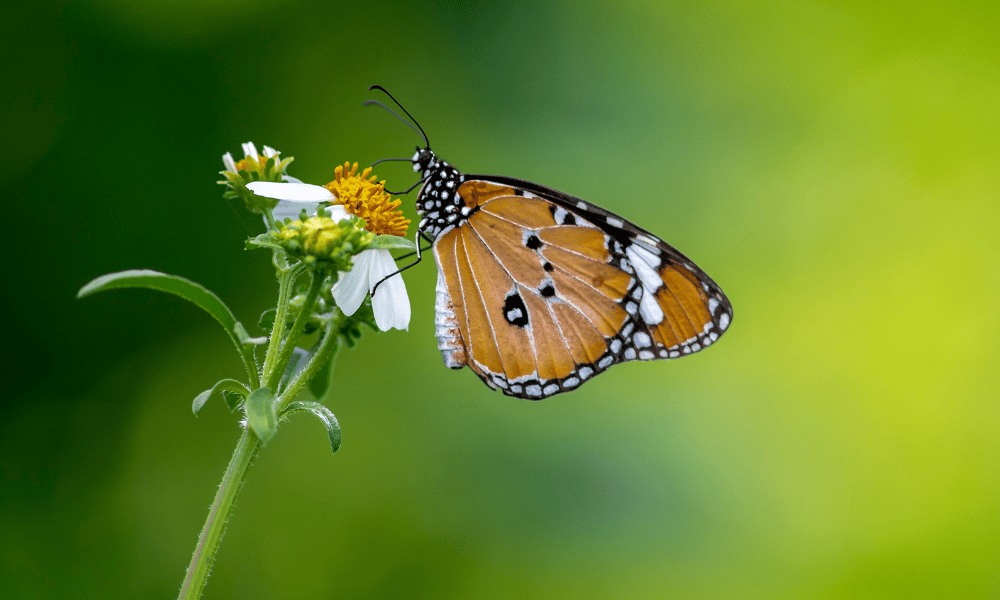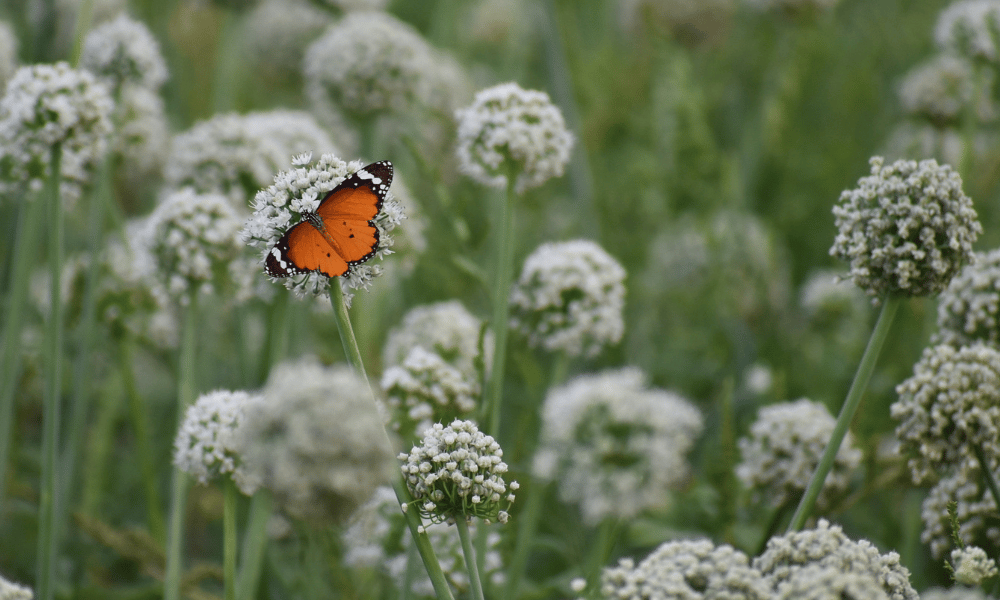Some people seem to think that butterflies look pretty but that’s about it. However, that couldn’t be further from the truth. This is because butterflies play a very significant role on our planets. So, why are butterflies important? What do they do?
Butterflies are important because they’re an indicator of a healthy ecosystem and play a crucial role in pollination and pest control.
Butterflies are an integral part of the global food chain and represent a significant portion of invertebrates. However, pollination remains one of the most important elements of a butterfly’s existence.
The good news continues because gardens that are full of butterflies shouldn’t need to apply pesticides as butterflies tend to eat a range of common pests. Of course, it should go without saying that you need to avoid pesticides if you plan on encouraging wildlife anyway!
Why are Butterflies Beneficial to the Environment?
A butterfly’s role in the ecosystem is more than that of a pretty-looking insect. One of the most obvious benefits is that butterflies help greatly in pollinating your garden.
Flowers, especially those with bright colours and strong scents, appeal to butterflies. Butterflies will be drawn in, knowing they have found a viable source of nectar.
While they extract nectar, a butterfly’s body has a natural system of collecting pollen from one flower and drops the pollen once the butterfly reaches another flower.
Want to Attract Butterflies to Your Garden?
We’ve Put Together an Ultimate Guide to Attracting Butterflies to Your Garden Including Our Top 11 Plants You NEED to Start Growing Today:
Are Butterflies Important Pollinators?
Yes, butterflies play a crucial role in pollinating, especially flowers that are fragrant and yellow or red – unlike bees which are more attracted to purple and pink.
Nectar is the primary aspect of a butterfly’s diet. They suck on nectar using their proboscis, which is a long mouthpart. After all, butterflies do not have mouths that can eat hard or solid food so rely heavily on nectar.
Butterflies are diurnal, which means they visit flowers during the day, especially during heavy sunlight. They use cues such as odour, colour, shape, and size to locate flowers.
Whenever a butterfly looks for a flower to suck its nectar from, the pollen from the flower gets attached to some of the butterfly’s body parts. However, butterflies cannot pick up a significant amount of pollen on their bodies due to their elongated structure. A huge portion of pollen gets deposited on parts of their mouth and head.
Even though butterflies are not as effective a pollinator as bees, they still play a crucial role in pollination. Lastly, many flower types solely depend on butterflies for pollination, for instance, peacock flowers.

Are Butterflies Endangered?
There are more than 20 butterfly species that are at the risk of becoming endangered. Since 1950, almost 5 different species of butterflies have become extinct in the US alone.
The greatest contributing factor in butterflies becoming endangered is the change in their habitat. A butterfly’s habitat undergoes a great loss when human development occurs mainly for agricultural, commercial, or residential reasons.
Other factors include climate change due to global warming, the increasing use of pesticides, and predatory attacks by invasive species.
The Monarch butterfly faces the highest risk of becoming endangered out of all the butterfly species. Monarch butterflies are beautiful orange and black coloured butterflies that have traces of white around their wings. You know exactly what they look like – iconic!
During every fall, these butterflies cover the longest migration among all insects travelling from the south of Canada to Mexico.
One of the greatest reasons the Monarch butterfly is becoming endangered is due to the increase in deforestation in Mexico. This disturbs their migration cycle and also results in the loss of important trees and plants that serve as their habitat once they reach their migration destination.
Are Bees or Butterflies More Important?
There are many similarities between butterflies and bees. Both are diurnal, feed on nectar and can see UV rays. However, bees still have a more significant impact on the environment. This is because they are comparatively more aggressive in pollination and also help in producing honey and bees wax.
It’s also worth noting that a bee sucks on nectar during every single stage of its life cycle, unlike a butterfly.
Our 14 Fun Facts About Butterflies
Nature has blessed female bees with a structure that is highly effective in collecting pollen, and most of the bees have hair that naturally catches pollen grain and promotes pollination all over their bodies.
In general, bees visit flowers more than butterflies and are undoubtedly the better pollinators. In addition, bees are responsible for approximately 70% of the agriculture in the world.
This is why many scientists refer to them as the most important among all other beings on the planet. This, however, does not mean that butterflies are not important.
FAQs
If you’re still left with questions about the importance of butterflies then these FAQs might help you:
Butterflies pollinate those plants which tend to be flat with an easy place for them to land and will, therefore, pollinate these best. These flowers include cone flowers, buddleja, Verbena Bonariensis and yarrow.
Yes, as a human race, we would survive if butterflies were to go extinct. However, that doesn’t mean we would see no changes. Some plants would not survive without butterfly pollination and some pest species will see population explosions.







